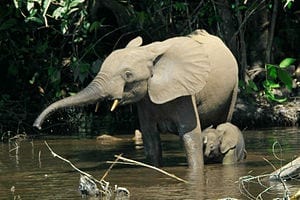
A project to revive long-gone species is a sideshow to the real extinction crisis
“We will get woolly mammoths back.” So vowed environmentalist Stewart Brand at the TED conference in Long Beach, Calif., in February in laying out his vision for reviving extinct species. The mammoth isn’t the only vanished creature Brand and other proponents of “de-extinction” want to resurrect. The passenger pigeon, Caribbean monk seal and great auk are among the other candidates—all species that blinked out at least in part because of Homo sapiens. “Humans have made a huge hole in nature in the last 10,000 years,” Brand asserted. “We have the ability now—and maybe the moral obligation—to repair some of the damage.”
Just a few years ago such de-extinction was the purview of science fiction. Now it is so near at hand that in March, Brand’s Long Now Foundation, along with TED and the National Geographic Society, convened an entire conference on the topic. Indeed, thanks to recent advances in cloning and the sequencing of ancient DNA, among other feats of biotechnology, researchers may soon be able to re-create any number of species once thought to be gone for good.
That does not mean that they should, however. The idea of bringing back extinct species holds obvious gee-whiz appeal and a respite from a steady stream of grim news. Yet with limited intellectual bandwidth and financial resources to go around, de-extinction threatens to divert attention from the modern biodiversity crisis. According to a 2012 report from the International Union for Conservation of Nature, some 20,000 species are currently in grave danger of going extinct. Species today are vanishing in such great numbers—many from hunting and habitat destruction—that the trend has been called a sixth mass extinction, an event on par with such die-offs as the one that befell the dinosaurs (and much else) 65 million years ago. A program to restore extinct species poses a risk of selling the public on a false promise that technology alone can solve our ongoing environmental woes—an implicit assurance that if a species goes away, we can snap our fingers and bring it back.
Ironically, the de-extinction conference immediately followed the Convention on International Trade in Endangered Species of Wild Fauna and Flora (CITES) meeting in Bangkok, which underscored just how devastating the trade has been. Reports released to coincide with the meeting revealed that between 2002 and 2011, the African forest elephant population declined by 62 percent from poaching; that fishing kills at least 100 million sharks a year—many of them members of imperiled species; and that between 2000 and 2012, an average of 110 tigers a year were killed (as few as 3,200 of the cats remain in the wild). Poachers slaughter 30,000 African elephants every year for their ivory—the highest kill rate since the 1980s. At this rate, the species could disappear in two decades. So could Africa’s rhinos, prized for their horns.
Already conservationists face difficult choices about which species and ecosystems to try to save, since they cannot hope to rescue them all.
The Latest Bing News on:
Extinct Species Back from the Dead
- 2 more endangered ferrets cloned from animal frozen in the 1980s: "Science takes time"on April 18, 2024 at 5:00 am
Two more black-footed ferrets have been cloned from the genes used for the first clone of an endangered species in the U.S., bringing to three the number of slinky predators genetically identical to ...
- Can scientists clone an endangered species back from the brink of extinction?on April 17, 2024 at 9:34 am
They’re cute, they’re fuzzy - and they may just help bring their entire species back from the brink of extinction. The U.S. Fish and Wildlife Service announced Wednesday the births last year ...
- Can scientists clone an endangered species back from the brink of extinction?on April 17, 2024 at 8:00 am
Two more black- footed ferrets, one of North America’s rarest mammals, have been cloned, federal officials announced Wednesday.
- Two more endangered ferrets are gene copies of critter frozen in 1980son April 17, 2024 at 6:29 am
The U.S. Fish and Wildlife Service says two more black-footed ferrets have been cloned from the genes used for the first clone of an endangered species in the U.S. These three slinky predators are ...
- The Tasmanian tiger might be extinct but Aussies are determined to find it or bring it backon April 14, 2024 at 4:32 pm
"Sometimes people are dead accurate with the ... understands the push to de-extinct the Tasmanian tiger. He says he'd be the first person to line up and see a Tasmanian tiger if the species were ...
- 21 U.S. Animals, Plants Declared Extincton October 15, 2023 at 5:00 pm
endangered species director at the Center for Biological Diversity. “These plants and animals can never be brought back. We absolutely must do everything we can to avert the loss of even more threads ...
- The Tasmanian Tiger Has Been Extinct for 87 Years. It's About to Return From the Dead.on September 25, 2023 at 7:04 am
Scientists hope this technique can be applied to other extinct species that’ve been decimated by humanity’s impact on the natural world. Science could soon bring an animal back from the dead ...
- Should extinct species be brought back to life?on July 25, 2020 at 9:11 pm
Should we bring extinct species back to life? Sometimes whole species of animals or plants become extinct due to the changes in their habitat, predators or disease. But over the last 500 years ...
- Bringing extinct species back from the deadon September 4, 2008 at 5:00 pm
(CNN)-- The word "extinct" sounds pretty final -- and as a concept, it certainly should be. But the normal harbinger of bad news - the "Red List" issued by the World Conservation Union (IUCN ...
The Latest Google Headlines on:
Extinct Species Back from the Dead
[google_news title=”” keyword=”Extinct Species Back from the Dead” num_posts=”10″ blurb_length=”0″ show_thumb=”left”]
The Latest Bing News on:
De-extinction
- Woolly Mammoths In Yellowstone? Biotech Company Says It Has The Technologyon April 27, 2024 at 8:58 am
Biotech company Colossal Biosciences has announced plans to bring back the extinct woolly mammoth by 2028. They think Yellowstone could be a good place for reintroduction as the environment is ...
- What It'll Take to Create 21st-Century Mammoths, Dodos, and Thylacineson April 27, 2024 at 8:16 am
We don’t fully understand how to create an artificial placenta at the moment. We don’t really understand the intricacies of the developmental process. This is all information that we will learn along ...
- What the Author of Frankenstein Knew About Human Natureon April 26, 2024 at 4:00 am
Eight years after Frankenstein, Mary Shelley imagined the life of the last man on Earth.
- This Startup Aims to Bring Back the Woolly Mammoth, But at What Cost?on April 25, 2024 at 7:19 pm
Colossal Biosciences says its work to revive keystone species such as the mammoth could be a boon for ecological restoration and biodiversity ...
- Some species suffer from elevator extinctionon April 24, 2024 at 4:58 pm
As global temperatures rise, these species go higher in mountains until they run out of room.
- A rare mammal with a trunk-like snout and webbed feet: The Iberian desman faces extinctionon April 24, 2024 at 7:34 am
The ‘Spanish platypus’ is unique to the Iberian Peninsula and a jewel of evolution that has lost up to 70% of the geographical range it occupied three decades ago ...
- Historical Extinct Animals: A Glimpse into the Paston April 22, 2024 at 4:59 pm
However, there is ongoing scientific interest in the potential for de-extinction using genetic technology, raising the possibility of bringing these iconic creatures back to life in the future. The ...
- THE BOOKWORM SEZ: 'Extinction' offers a mountainy murder rompon April 21, 2024 at 2:30 pm
Nothing good comes from a predawn phone call, but this one was good and bad. For the first time, Cash was tapped to be the Agent in Charge of a case for her employer, the Colorado Bureau of ...
- Vaquita Survey 2024: The Search For The World's Rarest Mammal Is Onon April 19, 2024 at 7:44 am
Vaquita porpoises live along a small strip of Mexico’s Upper Gulf of California, which will be the focus of the 2024 survey. Two ships will carry a team of experienced observers as the survey goes in ...
- Human Interference Led To The Extinction Of The Dodo Bird By 1690, But Now, A Genetic Engineering Company Is Working To Revive This Bird Species And Return It To Its Original ...on April 18, 2024 at 4:00 pm
The Dodo is an iconic character that appears in Lewis Carroll’s fictional novel Alice’s Adventures in Wonderland. Since the children’s book is a work of fiction, perhaps you may have thought that the ...
The Latest Google Headlines on:
De-extinction
[google_news title=”” keyword=”de-extinction” num_posts=”10″ blurb_length=”0″ show_thumb=”left”]










